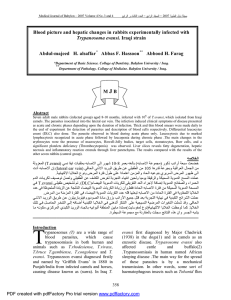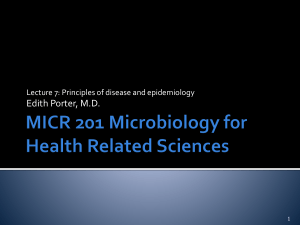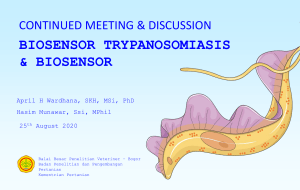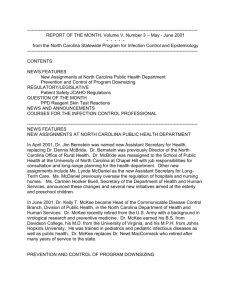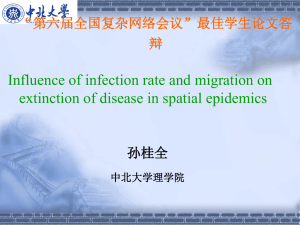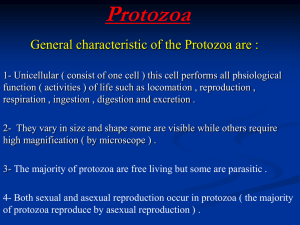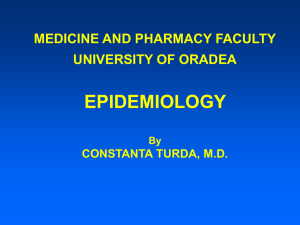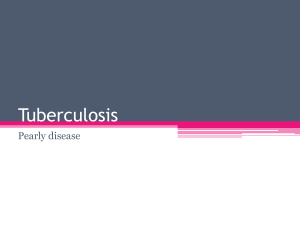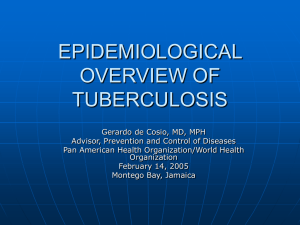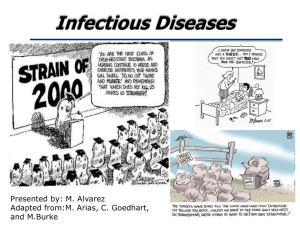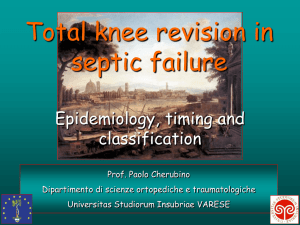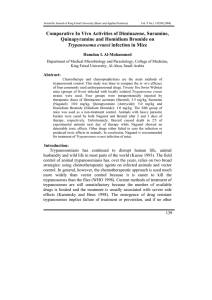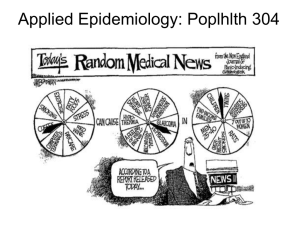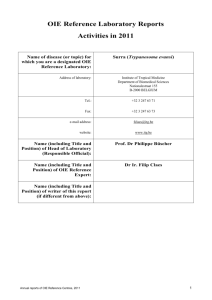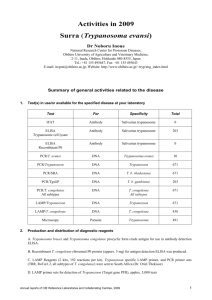Trypanosoma evansi
advertisement
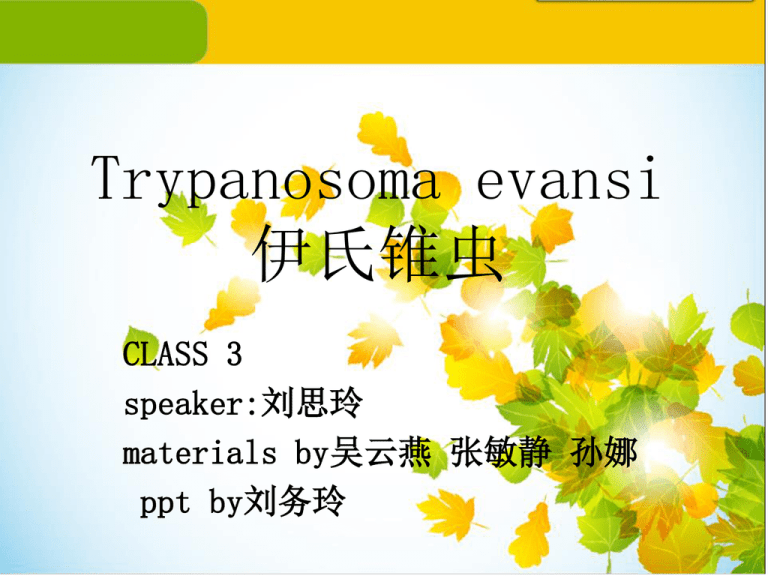
Trypanosoma evansi 伊氏锥虫 CLASS 3 speaker:刘思玲 materials by吴云燕 张敏静 孙娜 ppt by刘务玲 • Introduction • Morphology • Life cycle • Epidemology • Symptoms • Lesions • Diagnosis • Control • Reference Introduction • What is Trypanosomosis/surra disease? (伊氏锥虫病/苏拉病) A disease is caused by Trypanosoma evansi(伊氏锥虫) transmitted by blood-sucking insect(吸血昆虫) Introduction • Hosts: cattle, goat , sheep, camel(骆驼),equines(马属动 物),dog, deer, elephant, tiger, rabbit, guinea pig(豚 鼠), rat, mice • Site of infection: blood, lymph(淋巴液),ncurolymph(脑脊液) distributed to tissues and organs through the blood • Distribution: Trypanosomosis is more common in tropical(热带) and subtropical zone(亚热带). Morphology • monomorphic in form(单 行型锥虫) • willow-like(柳叶状) • The nucleolus(细胞核) is oval and lies in the center of parasite. • An free flagellum(一根游 离鞭毛) • length:18~34μm • width:1~2μm Morphology Life cycle • blood-sucking insect as mechanical transmission vectors • no cyclic development in vectors • reproduction: longitudinal binary fission in blood, lymph and blood-forming organs . Epidemiology Susceptible animals(易感动物): (1)mostly domestic animals and wild animals ; (2)Trypanosoma evansi in different geographic area has different hosts. Epidemiology Source of infection(传染来源): (1)animals infected (2)animals with ever drug treatment failed to kill the pathogeny(病原) 4 Epidemiology Route of infection(感染途径): • Tabanus(虻属) : the most important vectors • vampire bat(吸血蝠) • carnivore(肉食兽) :infected by food contained with Trypanosoma evansi. • Incomplete disinfection surgical instruments(消毒不完全的手术器械), including injection equipment that used in infected animals can disseminate infection to the healthy ones. Epidemiology • Epidemiology season: related to the activity season of vector insects. Symptoms • The symptoms are different based on different animals. • Equines(马属动物)have stronger susceptibility. • Camels The disease is called camel flies epidemic disease or the green dry disease(骆驼伊氏锥虫病俗称,驼蝇疫,青干病) • Cattles and buffloes The disease is a typical course of chronic infection(慢性感 染). Lesions • Characteristic: subcutaneous dropsy(皮下水肿) • sometimes hydrothorax and ascites(胸 腔积液和腹水) • Spleen(脾脏) and lymph node(淋巴结) become enlarged. • ecchymosis(出血斑) in gastric mucosal of ruminated animals(反刍动物) Diagnosis • Collection of samples: (1)blood from infected domestic animal (2)skin exudation (3)lymph node • Examination (1)Giemsa(吉姆萨染色) (2)Microscopy(镜检) (3)other: latex agglutination test(乳胶凝集试验) Treatment (1)Suramin(苏拉明):intravenous injection (静注) (2)Quinapyramine(喹嘧胺):subcutaneous injection(皮下注射) (3)Diminazene aceturae(三氮脒): Subcutaneous injection or deep muscles injection (4)Isometamidium chloride(氯化氮胺菲啶盐酸 盐):deep muscles injection (5)锥净 (Chinese medicine) Prevention (1)control vectors in case of their contact with the hosts (2)limit the activities of recessive infection animals(隐性 感染动物) (3)use drugs Reference • 《动物原虫病学》 • 《兽医寄生虫学》 蒋金书 编著 汪明 编著 Thank you!


